
A perfect winter getaway, where nothing is a problem!
Muscat … Quriyat – Sur – Ras Al Jinz – Al Ashkharah – Jalan Bani Bu Ali – Al Kamil … Nizwa – Al Hamra – Al Ayn – Al Arid– Al Muraybi – Al Ayn (UAE)
672 km cycled
Christmas/New Year 2023/4
Watch the video!
Oman has been on the cards for years and after our initial introduction to Omani culture in Zanzibar last summer, our interest was renewed. Pegasus Air tickets from Zurich to Muscat via Istanbul were still quite affordable when we booked our Christmas/New-Year getaway in November.


A little history
Oman was a Portuguese colony for over a hundred years before it acquired numerous Portuguese colonies itself in East Africa, and in the 18th century the Omani Empire reached as far as Zanzibar (now Tanzania). With a lucrative trade in ivory, slaves and spices, Stonetown, Zanzibar soon became one of the wealthiest towns in East Africa and even the capital of Oman.


After the death of Said Bin Sultan in 1856, the Empire was split between his two sons into the Sultanate of Zanzibar and the Sultanate of Muscat and Oman; the latter becoming a British Protectorate. This coupled with British pressure to abolish slave trade meant the Omani state began to lose political and economic power.


In 1970, Sultan Qaboos bin Said returned to Oman after studying in England and overthrew his father to become the head of state and absolute Monarch. At the time most of the population relied on subsistence farming and fishing and there were only 10km of paved roads in the country. He immediately brought about a huge modernisation programme, investing revenue from oil into education, health and infrastructure.


Muscat today
Today, it seems like affluence is Muscat’s middle name. Oman’s capital is a showcase of modern architecture and fast-moving multi-lane highways. It’s hard to imagine that 50 years ago, the country was so underdeveloped.


Sultan Qaboos Grand Mosque
The attention to detail and utter extravagance in Sultan Qaboos Grand Mosque in Muscat must be seen to be believed. This magnificent gift from the Sultan to the people of Oman can cater for up to 20,000 worshipers at any one time. The massive prayer hall (74.4m x 74.4m) contains an Iranian hand-woven carpet which weighs 21 tonnes and took four years to complete. The chandelier, weighing 8.5 tonnes, contains no less than 600,000 Swarovski crystals and 1,122 bulbs. Both were the largest of their kind until overtaken recently by Sheikh Zayed Mosque in Abu Dhabi.


A kick start
To ease ourselves into the tour, we took a lift out of town, thus avoiding the hectic highways, flyovers and merging lane system. Once on our bikes, our route followed the coastal highway, with streetlights and power lines marking the route through a barren desert landscape.

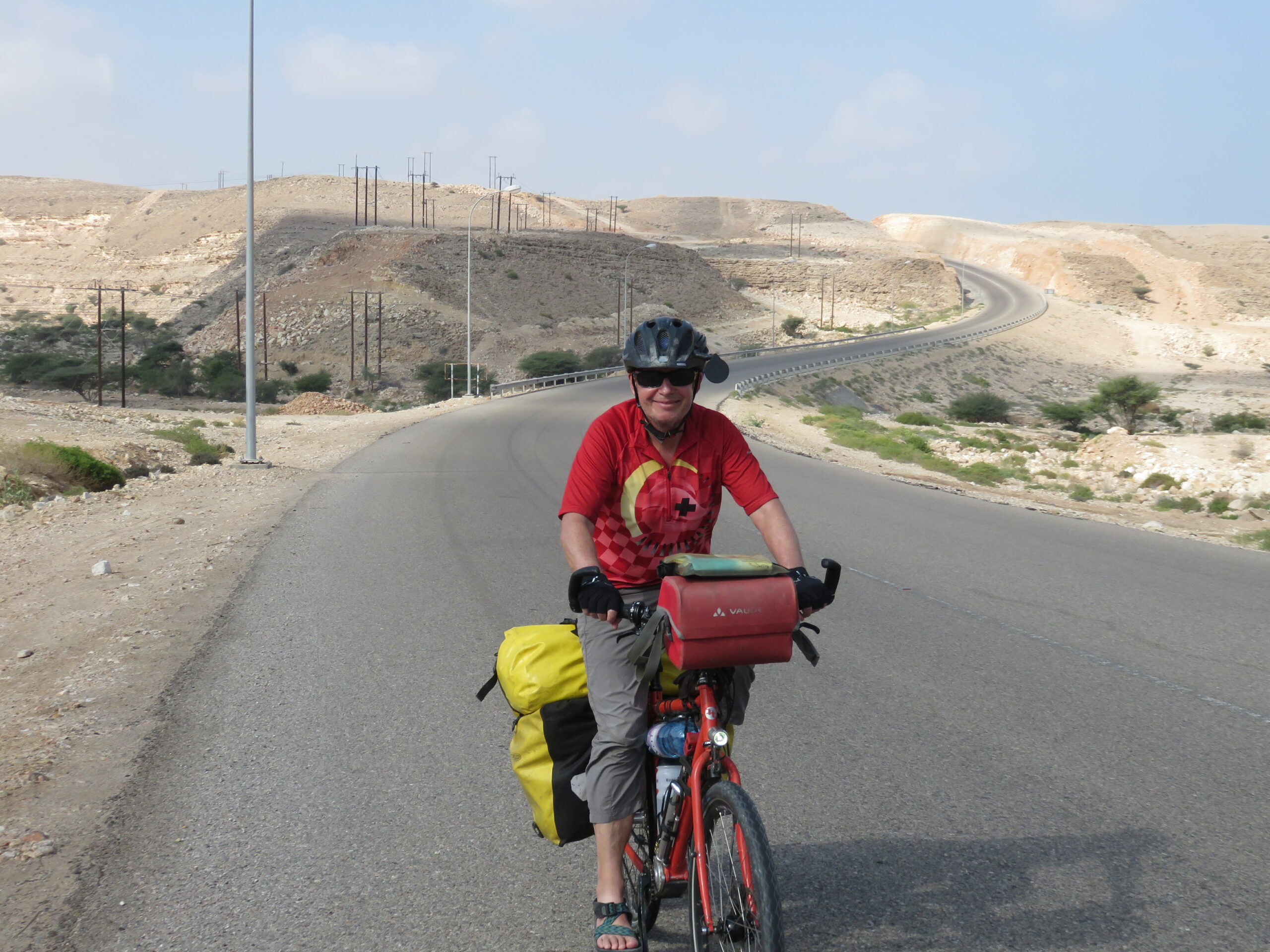

Supplies
Distances between villages/towns are manageable and public water dispensers offering chilled, filtered water are widely available. This made logistics very easy. And with temperatures reaching 30°C, the numerous shelters along the coast were wonderful shady spots for a break/picnic. We had flashbacks to Namibia and dreamed of how different a trip there would be if such water fountains and shelters were the norm!
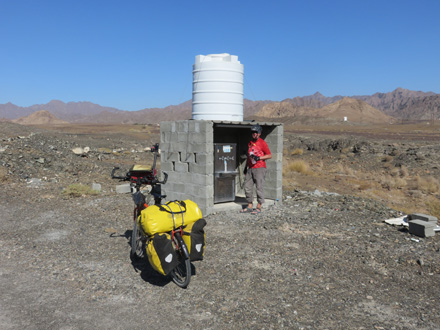


Wadis
Cycling in the Omani desert has many highlights, not least the amazingly beautiful wadis. These picturesque water holes are generally easily accessible with a short hike along a falaj (irrigation channel) and often through a magnificent gorge lined with palm trees.
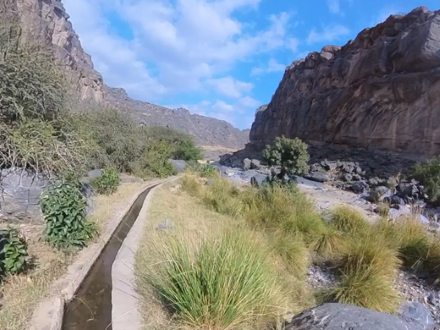


Cyclists’ destination
Oman is a popular winter destination for cyclists, and we were lucky to cross paths with a couple of seasoned cyclists in Sur. We enjoyed the company of Jin (@jin.seok.bang) from Korea one evening and spent a few very pleasant days cycling with Alfredo (@pedaleandoenlibertad) from Spain afterwards.

Sea turtles
Thousands of green sea turtles come to lay their eggs on the beaches of the Gulf of Oman every year. It was a sobering experience however, walking Ras al Jinz beach at sunrise and seeing so many hatchlings already killed that morning by gulls and foxes. The adult turtle sand tracks left no doubt in our minds as to their disorientation most likely caused by the fishermen’s bright lights on the beach. While rangers do try to ensure there are no campers/tourists on the beach between sunset and sunrise, the area is huge and almost impossible to patrol. Education is probably the only sustainable solution.


Omani hospitality
Throughout Oman, we were cheered on and welcomed by the locals, who showed great interest in our trip. One particular day, we were flagged down by Rashid bin Humaid Al-Kasbi and invited into his home. Before we knew it, we were enjoying coffee, dates, juice and water while communicating with his brother Saleh bin Ali by means of a translation app on his phone. In the meantime, Rashid organised an impressive spread of delicious chicken, fish, salads and rice for us three hungry cyclists, followed by an incense ceremony and an invitation to stay the night.
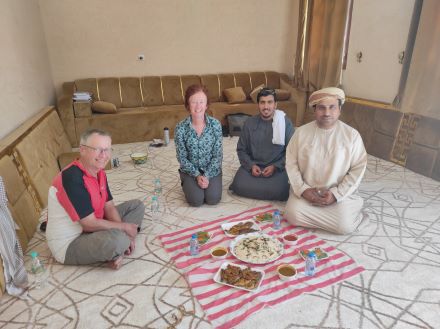
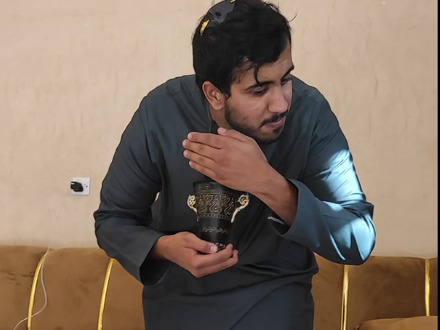
And the trend continued. Invitations, cakes, dates, tea, coffee, water – you name it; We were offered the world from the roadside. Omani hospitality and generosity knows no bounds.
You may have noticed that women are low on the ground. Well, seemingly women are greatly sought after and not every man is lucky enough to get married. When they do, their wives are treated like queens and kept out of public view. For that reason, it’s the men that greeted us on the roadside and in restaurants, and if we encountered women, they generally covered their faces.
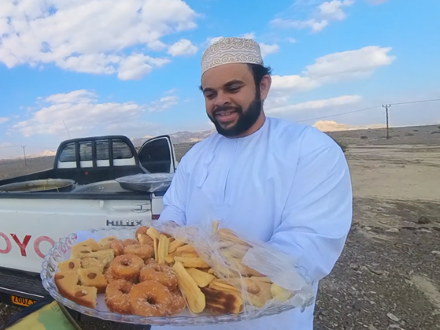
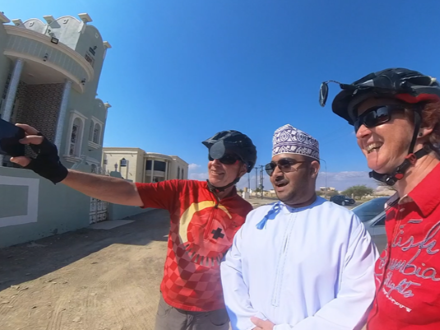
Sand dunes
There is a narrow line between going off the beaten track for a little adventure in the desert and going off the rails pushing the bikes in deep sand! Our excursion to Wahiba Sands involved quite a lot of such pushing but was duly rewarded with a spectacular campsite in the dunes, where we enjoyed a magnificent palette of rusts and golds during sunset and sunrise.
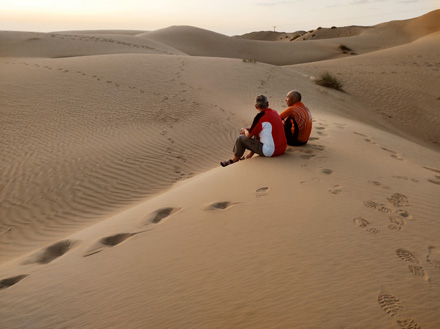
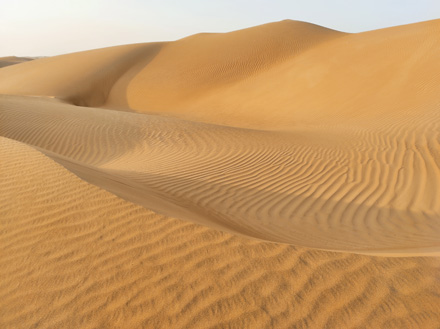
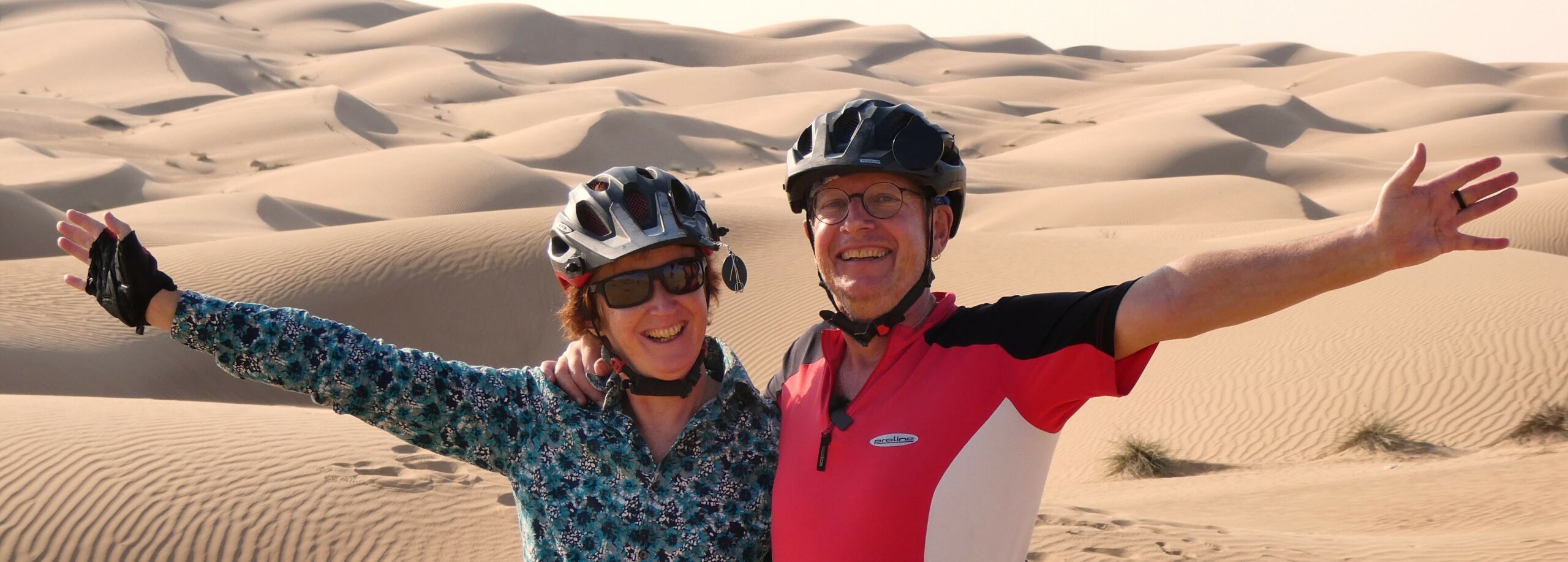
The next morning, the fun continued leaving Kurt to conclude: “Dunes are nice. But the next time Darina wants to see some, she can go by herself. I’ll stay in an air-con hotel in the meantime!”



Old capital
In an attempt to maximise on highlights on our short winter break, we availed of a transfer from Al Kamil to Nizwa, Oman’s former capital. Nestled in the mountains, Nizwa is a true cultural centre dominated by its fort and castle, which contain wonderful exhibitions recounting Oman’s history and culture.


Every Friday, the town comes to life with an animated goat and camel market, drawing locals and tourists alike. The animals are paraded through the ring from 6am and by lunchtime, the animals have been traded and the tourists have moved on!

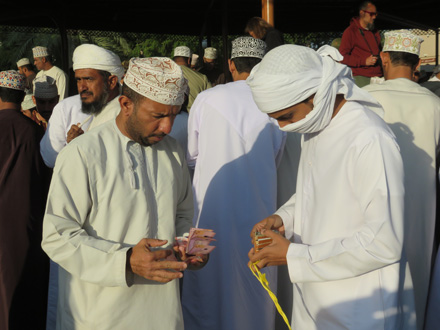

Ghost town
If you had the choice to live in a house of mud and palms or move into a modern one with electricityand running water, what would you choose? Well, the abundance of abandoned villages in Oman illustrates the local preference.


Al Jabal al Akhdar
There is a German expression: “whoever loves their bike, pushes their bike” and our climb in the Al Jabal al Akhdar mountain range gave us many opportunities to show our love! Nevertheless, the views were rewarding and the downhill certainly justified the uphill battle!

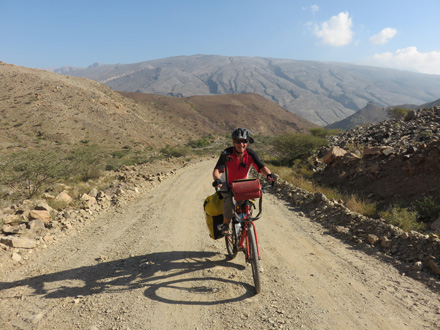

Beehive tombs
Oman pays special attention to culture and invests a lot of money into restoring historical forts and castles as well as archaeological sites. The mountainous area northwest of Nizwa is dotted with strings of beehive tombs dating back to 3,000BC. Very little is known about these burial structures, but one thing is for sure, the deceased were laid to rest in one of the most scenic locations far and wide!


No problem!
After a tough day fighting ferocious head wind, we located a hotel on Google Maps to save us camping in the storm. We rocked up at the hotel to find the front door open and not a soul in sight. Just as we were turning to leave, Hamed appeared in his pick-up and revealed that it was in fact his private home! But in true Omani spirit, not only did he open his doors to us, he also ensured the cheeky cyclists didn’t leave hungry the next morning! The Omanis are in a league of their own!


Food
Around 40% of the Omani population are foreigners, many stemming from India. For that reason, it’s no wonder that the local cuisine is spicy with a marked Indian influence. Tasty grilled meat and fish with flat bread and salads, as well as curries and rice dishes definitely put a smile on a hungry cyclist’s face! A substantial main course costs 1-2 Rial (2-4 €). As Oman is a Muslim country, beer is not available. However, Kurt developed a taste for fresh juices that set us back about 0.6 Rial (1.40€) a pop.
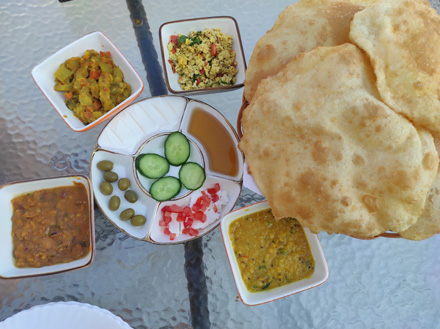
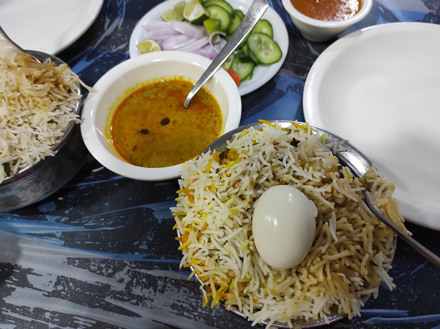
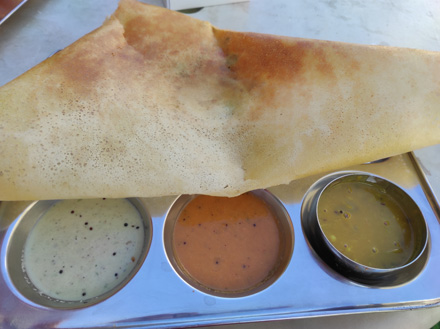
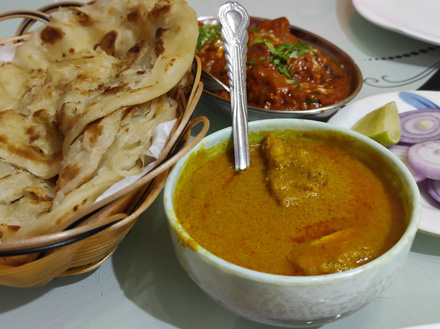
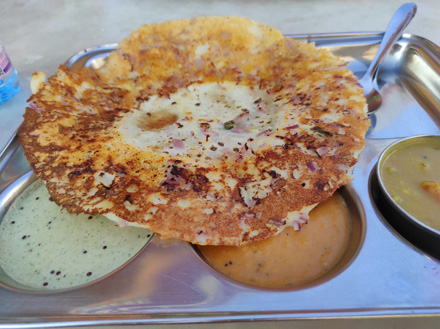
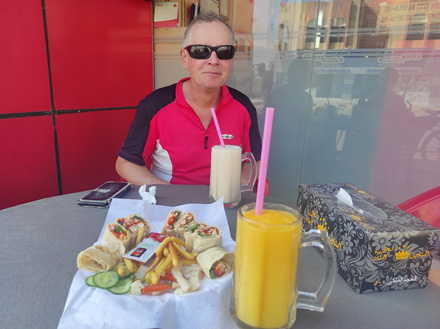
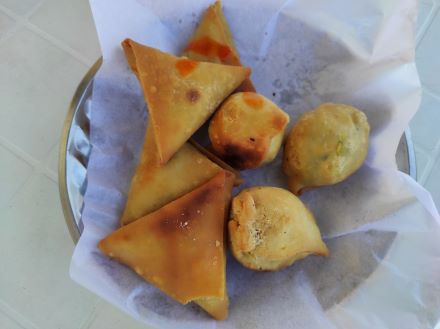
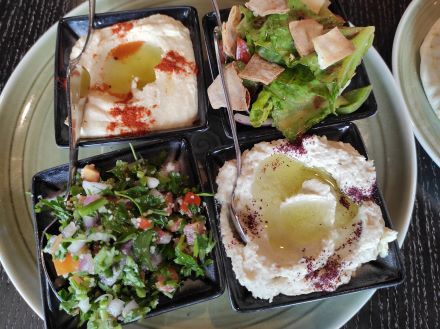
Accommodation
Oman wins hands down when it comes to scenic camp spots. Wild camping is permitted, and The Gulf of Oman offers endless coves and cliffs, ideal for an overnight stay. What’s more, on the coast, we didn’t have to deal with flies, mosquitos … or hungry mice! Once we moved inland, we had the magnificent mountains as a perfect backdrop! Hotel rooms ranged from about 12 Rial (30€) in the countryside to 25 Rial (60€) in a 4-star hotel in the capital.


The verdict!
As a winter cycling destination, Oman is hard to beat. You have your choice of paved and dirt roads and can camp wild wherever you like. The scenery varies from beautiful coastal cliffs to arid rugged mountainous terrain with stunning sand dunes and refreshing water holes in between. The climbs may be steep at times but are well worth the effort! But the icing on the cake in Oman is its friendly, welcoming and amazingly generous people. These guys rock! Thank you Oman – we shall be back!




